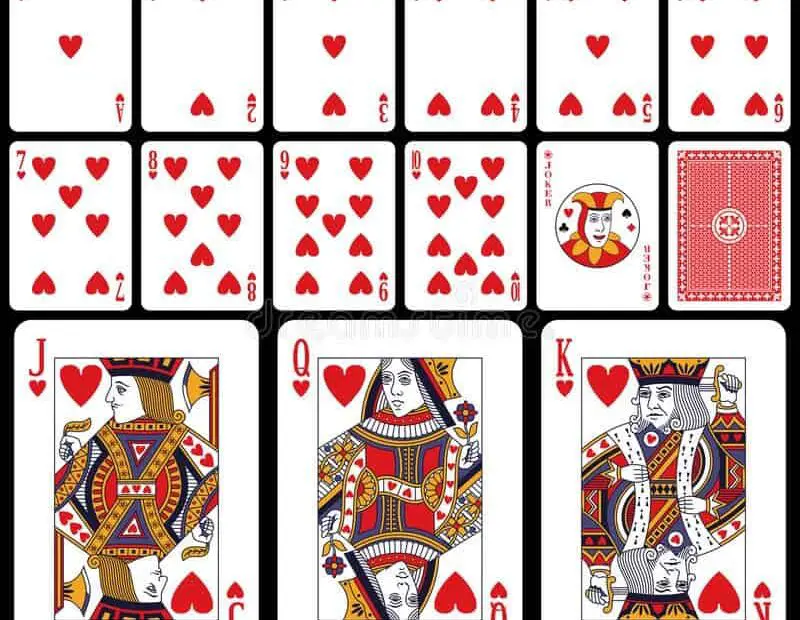Playing cards are pieces of specially prepared card stock, heavy paper, thin cardboard, plastic-coated paper, cotton-paper blend, or thin plastic that are marked with distinguishing motifs. They are used for playing games, for education, for divination, and for conjuring. They are also collected as a hobby or for monetary value. Playing cards has a long and rich history, and they come in various types and styles, depending on the region and the purpose. Playing cards also have different uses and meanings, depending on the game and the context.
History of Playing Cards
Playing cards were probably invented in China during the Tang dynasty (618–907 CE) as a result of the usage of woodblock printing technology. The earliest reference to playing cards is from a 9th-century text that mentions a “leaf game” played by a princess and her family. The cards were likely made of paper and had four suits: coins, strings, myriads, and tens of myriads.
Playing cards spread from China to other parts of Asia, such as India, Persia, and Egypt, where they were adapted to local cultures and preferences. Playing cards reached Europe around the 14th century, most likely through trade routes or military campaigns. The earliest European playing cards were similar to the Mamluk cards from Egypt, which had four suits: cups, coins, swords, and polo-sticks.
Playing cards evolved and diversified in Europe over time, giving rise to different types and styles of cards. Some of the most common types of playing cards in Europe are:
- French-suited cards, which have four suits: hearts, diamonds, clubs, and spades. They are the most widely used type of playing cards in the world, especially in the English-speaking countries.
- German-suited cards, which have four suits: hearts, bells, acorns, and leaves. They are popular in Germany, Austria, and some parts of Central and Eastern Europe.
- Italian-suited cards, which have four suits: cups, coins, swords, and clubs. They are mainly used in Italy, Spain, and some parts of Latin America.
- Swiss-suited cards, which have four suits: roses, bells, acorns, and shields. They are mainly used in Switzerland and some parts of France.
- Tarot cards, which have four suits: cups, coins, swords, and batons, plus a fifth suit of 21 trump cards and a single card known as the Fool. They are used for playing games, such as tarot, tarock, and tarocchi, as well as for divination and cartomancy.
Playing cards also spread from Europe to other parts of the world, such as the Americas, Africa, and Australia, where they were influenced by local cultures and customs. Playing cards also developed new variations and innovations, such as jokers, indices, corner roundings, and reversible court cards.
Types of Playing Cards
Playing cards come in various types and styles, depending on the region and the purpose. Some of the factors that distinguish different types of playing cards are:
- The number of cards in a deck. The most common number of cards in a deck is 52, which is the standard for French-suited cards. However, some types of playing cards have more or fewer cards, such as 32 for German-suited cards, 40 for Italian-suited cards, 36 for Swiss-suited cards, and 78 for tarot cards.
- The size and shape of the cards. The most common size and shape of playing cards are rectangular and palm-sized, with dimensions of about 88 mm × 63 mm. However, some types of playing cards have different sizes and shapes, such as square, oval, round, or miniature.
- The design and color of the cards. The most common design and color of playing cards are based on the French-suited cards, which have red and black suits, and white backgrounds. However, some types of playing cards have different designs and colors, such as regional patterns, artistic styles, thematic motifs, or custom-made images.
- The material and quality of the cards. The most common material and quality of playing cards are made of card stock, heavy paper, or thin cardboard, with a plastic coating or a finish to make handling easier. However, some types of playing cards are made of different materials and qualities, such as plastic, metal, wood, or silk, with varying degrees of durability and flexibility.
Uses of Playing Cards
Playing cards have different uses and meanings, depending on the game and the context. Some of the most common uses of playing cards are:
- Playing games. Playing cards are used for playing various games, such as poker, bridge, blackjack, solitaire, and other card games. Playing games with cards can be a form of entertainment, recreation, competition, or gambling. Playing games with cards can also involve skills, strategies, rules, and etiquette.
- Education. Playing cards can be used for education, such as teaching mathematics, logic, probability, statistics, and other subjects. Playing cards can also be used for learning languages, history, geography, and other topics. Playing cards can also be used for developing cognitive, social, and emotional skills, such as memory, concentration, communication, and cooperation.
- Divination. Playing cards can be used for divination, such as tarot card reading and cartomancy. Divination with cards can be a form of spiritual guidance, counseling, or fortune-telling. Divination with cards can also involve intuition, symbolism, interpretation, and ritual.
- Conjuring. Playing cards can be used for conjuring, such as magic tricks, cardistry, and card throwing. Conjuring with cards can be a form of entertainment, art, or sport. Conjuring with cards can also involve sleight of hand, manipulation, deception, and performance.
Conclusion
Playing cards are fascinating and versatile objects that have a long and rich history, and that come in various types and styles. Playing cards also have different uses and meanings, depending on the game and the context. Playing cards are more than just numbers and motifs, they are symbols and expressions of culture, creativity, and curiosity.
